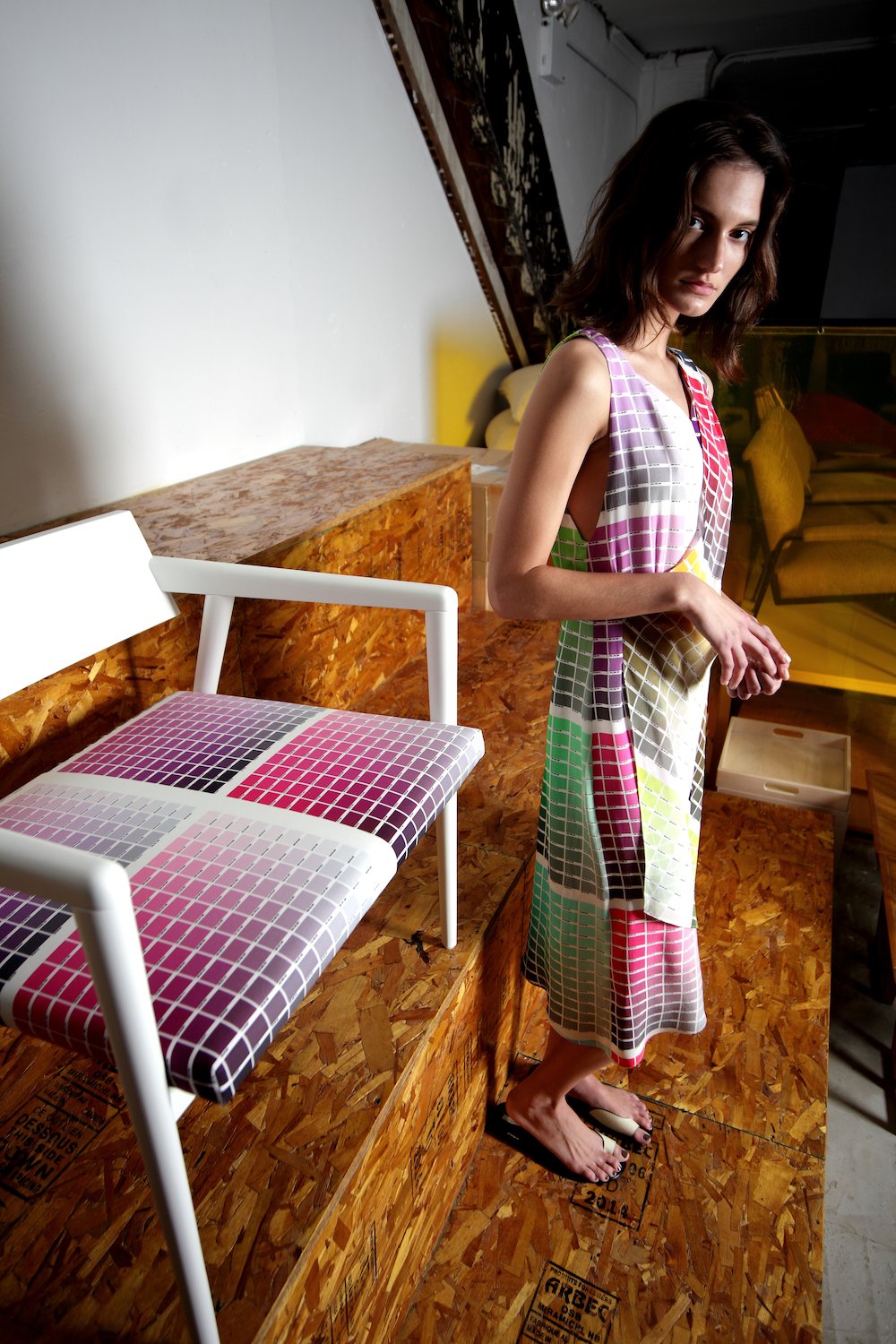Between Raf Simons’s Jaws homage at Calvin Klein 205W39NYC and Alessandro Michele’s Dolly Parton tribute at Gucci, the spring 2019 runways were awash in retro photography. “That stops at a certain point,” Julie said, citing our collective obsession with 20th century imagery. “That’s why it was really mind-blowing for us to bring back something from the 1890s. There’s an awesome juxtaposition between the modern, minimal Gio Ponti design and something so old world.”
The chair also takes on the duo’s “RGB” print, a grid they use to test hues on various fabrics and work through their color story. This season however, they let Kimbei guide the process. Only a few of the hand-applied colors in the 19th century photographs remain. The Alkires integrated these shades into their collection: a fluid one-shoulder dress adopts the scarlet red of han-eri collars, while a plush cardigan takes on the mauve of a tenugui headwrap, and a walnut skirt and jacket allude to the sepia tinge the antique images have taken on over time.
After achieving an artful interplay between Kimbei’s craft and read-to-wear, why extend it to seating? “You’d have to see our apartment to understand,” Julie said, admitting to an obsession with collecting vintage chairs. “It began with these heavy, wool-trimmed, chrome Thayer Coggin pieces that we got for 15 bucks a pop in mint condition at a loft in Houston seventeen years ago before we moved to New York.”
Like the Alkires, their clients are art and design enthusiasts with a deep appreciation for fine furniture. “Our clientele is looking for an emotional purchase, something that gives them a new experience,” Julie explained, lauding their willingness to try new things.
Since establishing Haus Alkire in 2012, the duo has attracted a loyal following with their contrast of extroverted and subdued pieces, but it’s their knack for telling stories with personal and historic significance that’s taking their work to new heights. “Bringing something lost or lesser known back to life is so special,” Julie said. “We can only hope that in 100 years, someone looks back and is inspired by what we’ve created.”



